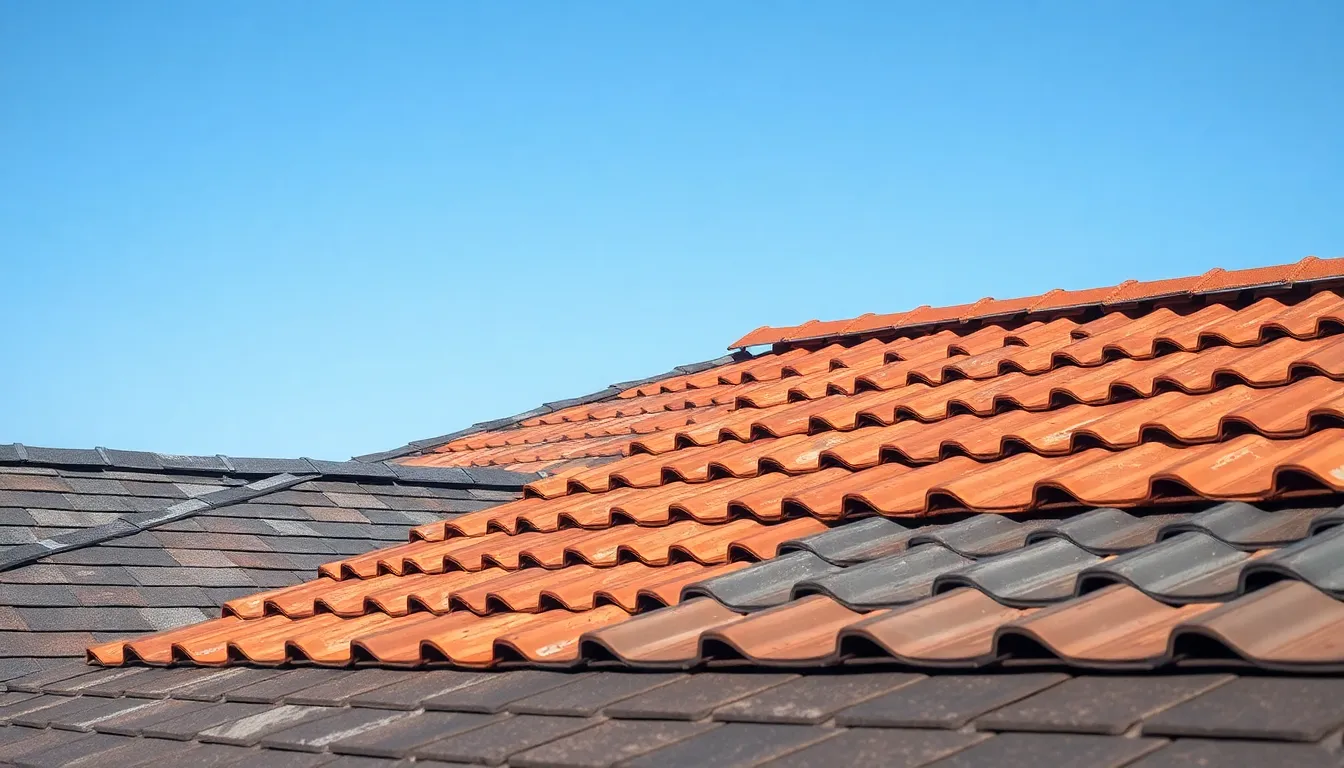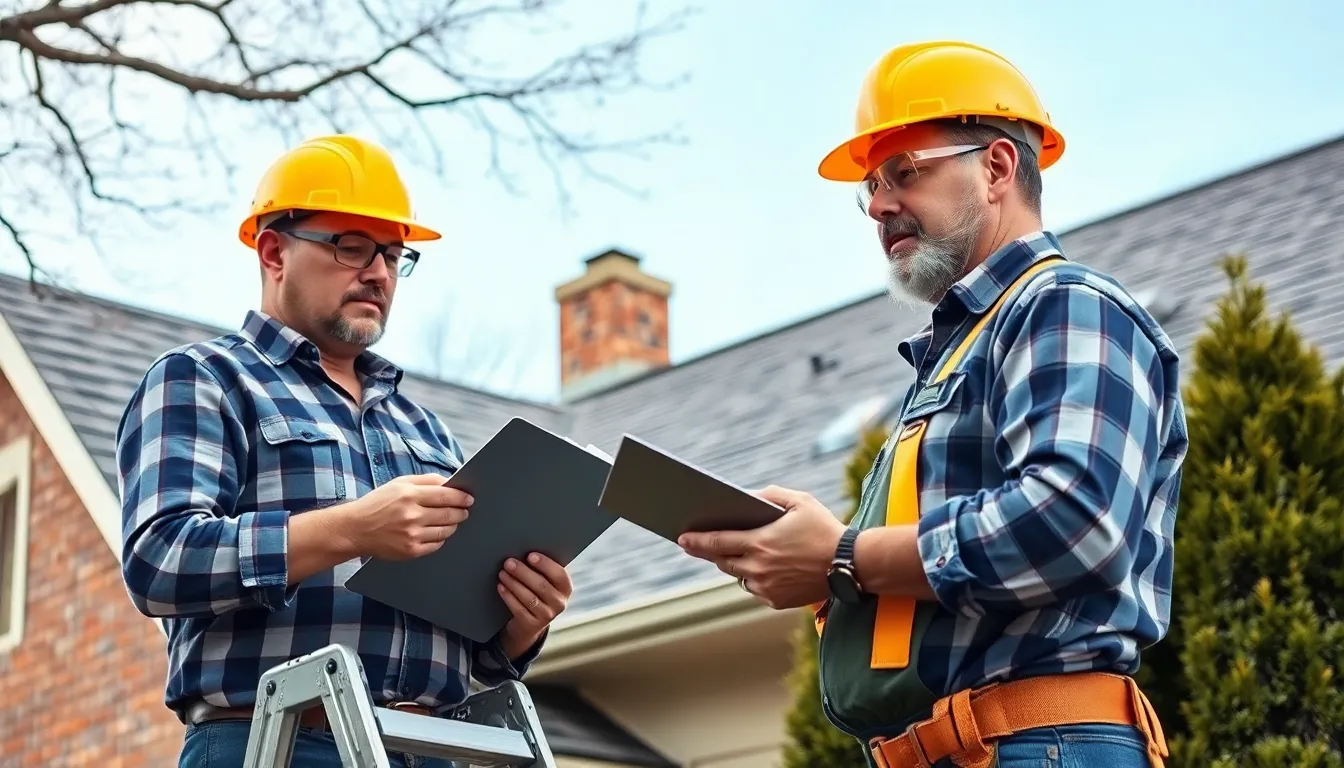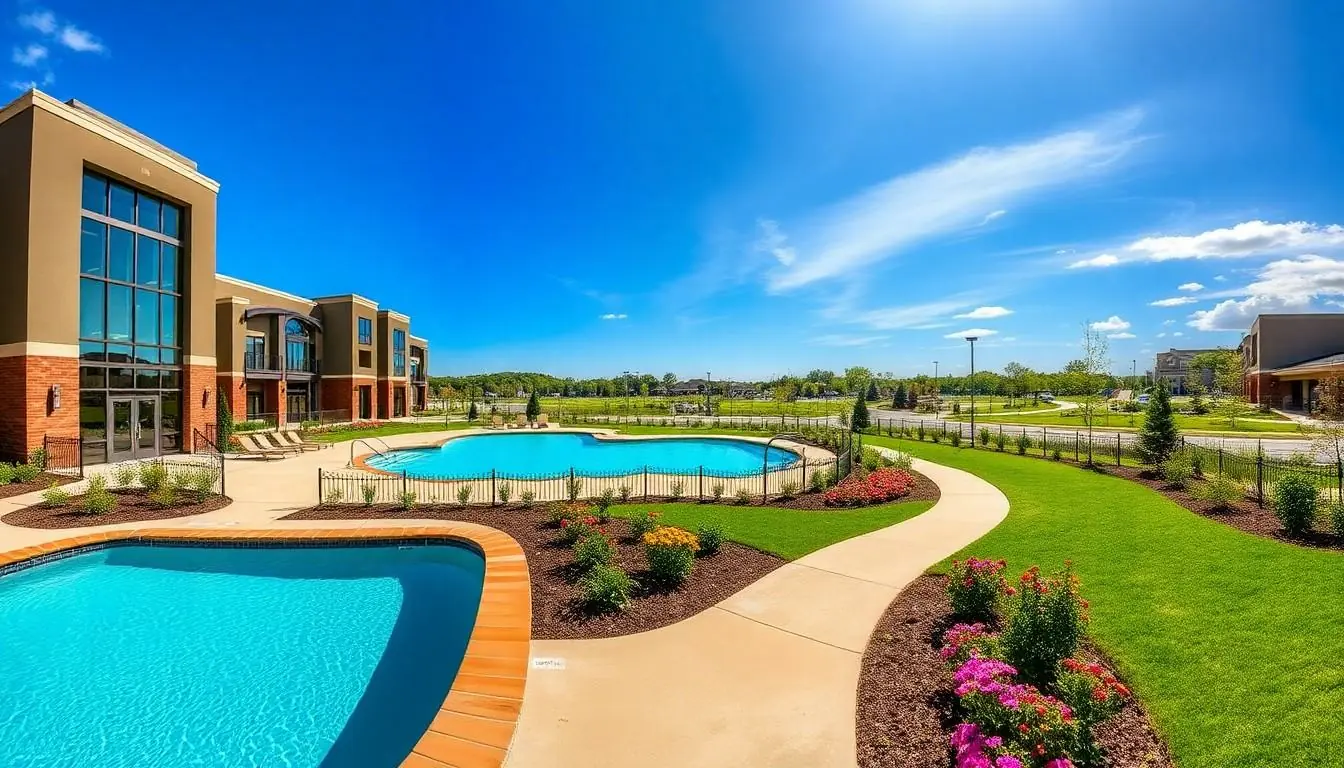A sturdy roof is essential for any home, protecting against the elements and enhancing curb appeal. Whether it’s a minor repair or a complete replacement, understanding roofing basics can save homeowners time and money. With the right tips and knowledge, anyone can tackle roofing projects confidently.
From choosing the right materials to recognizing signs of wear and tear, these roofing tips will empower homeowners to make informed decisions. Regular maintenance and timely repairs not only extend the life of a roof but also ensure safety and comfort inside the home. Dive into these practical insights that promise to elevate roofing skills and enhance home protection.
Table of Contents
ToggleEssential Roofing Tips for Homeowners
- Inspect Regularly
Inspect roofs every six months for damage. Look for missing shingles, leaks, and cracked flashing. Catching issues early prevents costly repairs.
- Choose Quality Materials
Select roofing materials based on climate and durability. For instance, asphalt shingles suit most regions, while metal roofs last longer in harsh climates. Prioritizing quality materials enhances longevity.
- Maintain Clean Gutters
Clean gutters frequently to prevent clogs. Clogged gutters cause water to back up, risking roof damage. Clear out leaves and debris at least twice a year.
- Trim Overhanging Branches
Trim tree branches that hang over the roof. Falling branches during storms can cause significant damage. Keeping branches trimmed minimizes risks.
- Check Flashing
Inspect flashing around chimneys and vents for deterioration. Damaged flashing can lead to water leaks. Replace any compromised flashing swiftly to maintain a watertight seal.
- Ensure Proper Ventilation
Ensure proper ventilation in the attic to prevent moisture buildup. Improper ventilation leads to mold and premature roof aging. Installing roof vents can significantly improve air circulation.
- Schedule Professional Inspections
Hire a professional to conduct thorough inspections every few years. While DIY inspections are useful, professionals identify hidden issues. Regular expert evaluations safeguard roofing investments.
- Address Problems Promptly
Address any identified problems immediately, regardless of how minor they seem. Small issues can escalate into major repairs if neglected. Timeliness is key in roof maintenance.
- Consider a Roof Replacement
Evaluate the need for roof replacement based on age and condition. Most roofs last 20-30 years, but wear and tear from extreme weather can necessitate replacement sooner. Knowing when to replace ensures ongoing protection.
- Invest in Roof Insulation
Invest in quality insulation to enhance energy efficiency. Good insulation helps regulate temperature inside the home, leading to lower energy bills. Effective insulation also prevents ice dam formation in winter months.
Choosing the Right Roofing Material

Selecting the appropriate roofing material is crucial for long-term durability and performance. Various options exist, each with unique features catering to specific needs and preferences.
Asphalt Shingles
Asphalt shingles represent the most common roofing material due to their affordability and ease of installation. They come in two primary types: organic and fiberglass. Homeowners benefit from a lifespan of 15 to 30 years, depending on the quality. Options include three-tab, which offers a flat appearance, and architectural, which provides a layered look. Additionally, asphalt shingles offer good weather resistance, making them suitable for diverse climates.
Metal Roofing
Metal roofing provides exceptional longevity and durability, often lasting 40 to 70 years. It comes in materials such as steel, aluminum, and copper. Homeowners appreciate its lightweight nature and resistance to extreme weather. Metal roofs reflect heat, promoting energy efficiency. Available in various styles and colors, metal roofing suits both contemporary and traditional homes. Maintenance typically involves periodic inspections for rust or corrosion.
Clay and Concrete Tiles
Clay and concrete tiles offer a distinctive aesthetic and excellent durability. They can withstand harsh weather conditions, making them ideal for regions prone to storms and heavy rain. Clay tiles typically last over 50 years, while concrete offers a slightly shorter lifespan. Installation requires a reinforced roof structure due to their weight. Homeowners enjoy the energy efficiency provided by their natural thermal properties, and they come in numerous colors and styles, enhancing curb appeal significantly.
Maintenance Tips for Longevity
Maintaining a roof extends its lifespan and enhances home protection. Follow these essential practices to ensure durability and performance.
Regular Inspections
Regular inspections play a vital role in identifying potential problems. Homeowners should conduct visual checks every six months, focusing on shingles, flashing, and gutters. Look for signs of wear, such as cracked or curled shingles, rusted flashing, and debris accumulation. After severe weather events, inspect for storm damage promptly to address any issues before they escalate. Professional inspections are recommended every few years for a comprehensive assessment of the roof’s condition.
Cleaning Gutters and Downspouts
Cleaning gutters and downspouts is essential for proper drainage and preventing water damage. Clogged gutters can lead to overflow, which threatens roof integrity and wall structures. Homeowners should clear debris from gutters at least twice a year or more frequently if surrounded by trees. Ensure downspouts direct water away from the foundation to prevent pooling. Installing gutter guards can reduce maintenance frequency while enhancing drainage efficiency.
Common Roofing Problems and Solutions
Homeowners face various roofing problems that can compromise safety and comfort. Addressing these issues promptly prevents further damage and ensures the longevity of the roof.
Leak Detection
Detecting leaks early prevents extensive damage. Homeowners should regularly inspect the interior ceilings for dark spots or water stains, indicating potential leaks. Evaluating the roof surface reveals cracked shingles, damaged flashing, or loose seams. Utilizing a garden hose to simulate rain aids in pinpointing leak sources. After identifying leaks, prompt repairs or consulting roofing professionals ensures long-term solutions.
Dealing with Weather Damage
Weather can significantly impact roof performance. Wind damage often manifests as missing shingles or lifted edges. Homeowners should check for these signs after storms and replace damaged components instantly. Heavy snow can lead to structural stress, making ice dams a concern. Keeping gutters clear and ensuring proper attic insulation helps mitigate ice dam formation. For hail damage, inspecting shingles for dents or cracks is crucial. In severe cases, professional assessments confirm the need for repairs or replacements to maintain roof integrity.
When to Hire a Professional Roofer
Homeowners should hire a professional roofer when facing challenges beyond their skills and knowledge. Hiring becomes essential in the following scenarios:
- Severe Damage
Severe roof damage, such as large leaks or significant shingle loss, often requires expert intervention to ensure safe and effective repairs.
- Structural Issues
Structural problems, including sagging roofs or damaged rafters, necessitate professional evaluation and repair to maintain safety and integrity.
- Complex Repairs
Repairs that involve intricate components, such as flashing or venting systems, benefit significantly from professional expertise to prevent further complications.
- Old Roofs
Roofs older than 20 years often need professional assessment, as even minor repairs can indicate the need for complete replacement.
- Weather Damage
After severe weather events, such as hurricanes or hailstorms, hiring a professional ensures thorough inspections and proper damage assessment.
- Insurance Claims
Filing insurance claims for roof damage often requires professional input to document issues accurately and facilitate the claims process.
- Lack of Experience
Homeowners lacking experience in roofing repairs should rely on professionals to avoid costly mistakes and ensure quality workmanship.
- Time Constraints
Homeowners pressed for time may find it more efficient to employ professionals for repairs, allowing them to address other responsibilities.
- Permit Requirements
Some roofing projects require permits and inspections, necessitating the hiring of professionals familiar with local regulations.
- Safety Concerns
Safety comes first, so homeowners uncomfortable with heights or using ladders should hire professionals to avoid accidents.
Investing in professional roofing services in these situations ensures quality repairs, enhances safety, and maintains the integrity of the home.
A well-maintained roof is essential for any home. By following the outlined tips homeowners can significantly extend their roof’s lifespan while ensuring safety and comfort. Regular inspections and timely repairs can prevent small issues from escalating into costly problems.
Choosing the right materials tailored to local climate conditions plays a crucial role in durability and efficiency. Homeowners should also consider professional assistance for complex issues and major repairs to maintain the roof’s integrity.
Investing time and effort into roofing care not only protects the home but also enhances its overall value and curb appeal. Prioritizing these practices will lead to lasting benefits for any homeowner.







